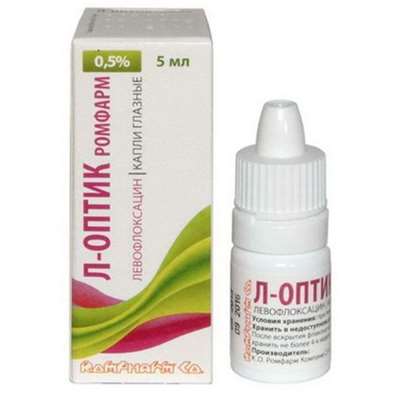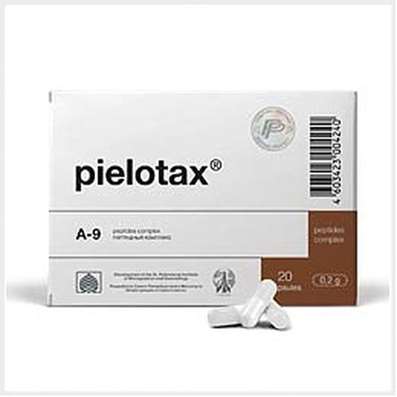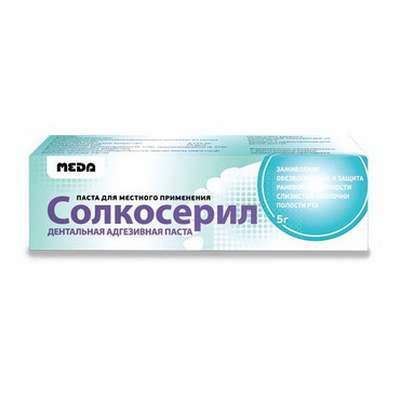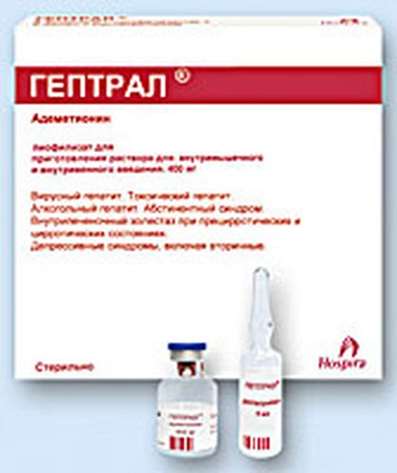Instruction for use: Maxigan
I want this, give me price
Active substance Metamizole sodium + Pitofenone + Fenpiverinium bromide
ATX Code N02BB52 Metamizole sodium in combination with other drugs, except for psycholeptics
Pharmacological groups
NSAIDs - Pyrazolones in combinations
Nosological classification (ICD-10)
J06 Acute upper respiratory infections of multiple and unspecified
Frequent colds viral diseases, Infections of the upper respiratory tract, Acute respiratory disease influenza character, for colds Pain, Acute colds,Cold, respiratory infection,Seasonal colds, Pain in infectious and inflammatory diseases of the upper respiratory tract, Bacterial infections of the upper respiratory tract, Bacterial respiratory infections, Viral disease of the respiratory tract, Viral respiratory tract infections, Inflammatory disease of the upper respiratory tract, Inflammation of the upper respiratory tract disease, Inflammation of the upper respiratory tract illness with difficult sputum, Inflammatory airway disease, Secondary infections with colds, Shortness of sputum in acute and chronic respiratory diseases, Upper respiratory tract infection, Infections of the upper respiratory tract, Respiratory Tract Infections, Infections of the respiratory tract and lungs, Infectious-inflammatory diseases of the upper respiratory tract, Infectious-inflammatory diseases of the upper respiratory tract and ENT-organs, Infectious-inflammatory diseases of the upper respiratory tract in children and adults, Infectious-inflammatory diseases of the upper respiratory tract, Infectious inflammation of the airways,respiratory infection, Qatar upper respiratory tract, Catarrh of the upper respiratory tract, Catarrhal disease of the upper respiratory tract, Catarrhal symptoms of the upper respiratory tract, Coughing with a cold, SARS, ARI, ARI with rhinitis phenomena, Acute respiratory infection, Acute infectious and inflammatory disease of the upper respiratory tract, Acute respiratory disease, Sore throat or nose, Respiratory viral infections, Respiratory diseases, Respiratory infections, Recurrent respiratory infections, Secondary infection with influenza, cold in the chest, Feverish condition with flu usitis, acute sinusitis, genyantritis, purulent sinusitis
K80.5 stones of bile duct without cholangitis or cholecystitis
Obstruction of common bile duct, Stones of the common bile duct, biliary colic, Colic liver, Hepatic colic, Cholesterol gallstones in the common bile duct
K82.8.0 * Dyskinesia of the gallbladder and biliary tract
Biliary obstruction, Biliary reflux gastritis, Biliary reflux esophagitis, biliary sludge, Pain smooth muscle spasm, Pain spasm of smooth muscles (renal and biliary colic, intestinal spasms, dysmenorrhea), Pain spasm of smooth muscles of internal organs, Pain spasm of smooth muscles of internal organs (kidney and biliary colic, intestinal spasms, dysmenorrhea), Gipermotornaya biliary dyskinesia, Hypokinesia of the gall bladder, Hypokinetic dyskinesia of the gallbladder, Biliary dyskinesia, Dyskinesia of the gallbladder,Dyskinesia of biliary tract, biliary colic, Bile reflux,Violation of bile secretion, Violation of the outflow of bile, Subacute and chronic diseases of the biliary tract, The spasm of the biliary tract, Biliary tract spasm, Spastic biliary dyskinesia, Spasmodic dyskinesia of the gallbladder, Spastic condition of the gastrointestinal tract
M25.5 Pain in the joint
Arthralgia, Pain syndrome in musculo-articular diseases, Pain syndrome in osteoarthritis, Pain syndrome in osteoarthritis, Pain syndrome in acute inflammatory diseases of the musculoskeletal system, Pain syndrome in chronic inflammatory diseases of the musculoskeletal system, Pain in the joints, Soreness of the joints, Soreness of joints in severe physical exertion, Painful inflammatory joint damage, Painful conditions of the musculoskeletal system, Painful joint conditions, Painful traumatic affection of joints, Pain in the musculoskeletal system, Pain in Shoulder Joints, Pain in the joints, Joint pain, Joint pain with injuries, Musculoskeletal pain, Pain with osteoarthritis, Pain in the pathology of the joints, Pain in rheumatoid arthritis, Pain in chronic degenerative bone diseases, Pain in chronic degenerative joint diseases, Bone-joint pain, Joint pain, Arthritic pain of rheumatic origin, Articular pain syndrome, Joint pain, Rheumatic pain, Rheumatic pains
M54.3 Sciatica
Ishialgia, Neuralgia of the sciatic nerve, Sciatic neuritis
M79.1 Myalgia
Myofascial pain syndromes ,Pain syndrome in musculo-articular diseases, Pain syndrome in chronic inflammatory diseases of the musculoskeletal system, Pain in the muscles, Tenderness of muscles, Muscular soreness in severe physical exertion, Painful conditions of the musculoskeletal system, Pain in the musculoskeletal system, Pain in the muscles, Pain at rest, Muscle aches, Muscle pain, Musculoskeletal pain, Myalgia, Muscle pain, Muscle pain at rest, Muscle pain, Muscular pain of non-rheumatic origin, Muscle pain of rheumatic origin, Acute muscle pain, Rheumatic pain, Rheumatic pains, Myofascial syndrome, Fibromyalgia
M79.2 Neurology and neuritis, unspecified
Pain syndrome with neuralgia, Brachialgia, Occipital and intercostal neuralgia, Neuralgia, Neuralgic pain, Neuralgia, Neuralgia of intercostal nerves,Neuralgia of the posterior tibial nerve, Neuritis, Neuritis traumatic, Neuritis, Neurological Pain Syndromes, Neurological contractures with spasms, Acute neuritis, Peripheral neuritis,Post-traumatic neuralgia,Severe pain of a neurogenic nature, Chronic neuritis, Essential neuralgia
N23 Renal colic unspecified
Pain in renal colic, Pain smooth muscle spasm, Pain spasm of smooth muscles (renal and biliary colic, intestinal spasms, dysmenorrhea), Pain spasm of smooth muscles of internal organs, Pain spasm of smooth muscles of internal organs (kidney and biliary colic, intestinal spasms, dysmenorrhea), renal Colic, ureteral colic, Renal colic, Renal colic with urolithiasis, Kidney disease, Spasm of smooth muscle in diseases of the urinary system, The spasm of the urinary tract, The spasm of the ureter, The spasm of the ureters, Spasms of the urinary tract, Spasms of the urinary tract
N94.6 Dysmenorrhea Unspecified
Pain during menstruation, Functional disorders of the menstrual cycle, Menstrual cramps, Emmeniopathy, Pain during menstruation, Painful menstrual irregularities, algomenorrhea, algomenoreya, Pain smooth muscle spasm, Pain spasm of smooth muscles (renal and biliary colic, intestinal spasms, dysmenorrhea), Pain spasm of smooth muscles of internal organs (kidney and biliary colic, intestinal spasms, dysmenorrhea), Disalgomenoreya, dysmenorrhea, Dysmenorrhea (essential) (Exfoliative), menstrual disorder, menstruation painful, metrorrhagia, Violation of the menstrual cycle, Menstrual irregularities, Prolaktinzavisimoe menstrual disorders, Prolaktinzavisimoe menstrual dysfunction, Pain spasm of smooth muscles of internal organs, Spasmodic dysmenorrhea, Primary disalgomenoreya
R10.4 Other and unspecified abdominal pain
Abdominal pain, Gastrointestinal spasm, intestinal colic, Colic in infants, The feeling of fullness, Resi abdominal, Spasm of smooth muscle in diseases of the digestive tract, The spasm of the biliary tract, Biliary tract spasm, enterospasm, Spasm of the digestive tract, Spasms of the digestive tract smooth muscle, stomach Cramps, gastrointestinal spasms, Spastic condition of the gastrointestinal tract, intestinal tenesmus, Feeling of fullness, Baby colic
R25.2 Cramp and spasm
Muscle spasms in tetanus, Pain smooth muscle spasm, Pain spasm of smooth muscles (renal and biliary colic, intestinal spasms, dysmenorrhea),Pain spasm of smooth muscles of internal organs, Pain spasm of smooth muscles of internal organs (kidney and biliary colic, intestinal spasms, dysmenorrhea), Painful muscle spasm, mimic spasm, spasticity, Muscle spasms, Muscle spasms of central origin, Muscle spasms, Neurological contracture with spasms, Night cramps in the extremities, Night leg cramps, Symptomatic convulsive state, West syndrome, Smooth muscle spasm, Spasm of vascular smooth muscle, muscle spasm, The spasm of the striated muscles due to organic diseases of the CNS, Skeletal muscle spasm, The spasms of smooth muscles of internal organs, The spasms of skeletal muscles, Spastic condition of striated muscle, Spastic pain, Spasmodic state of smooth muscle, Spasticity skeletal muscle, muscle cramps, convulsions, Leg cramps, Seizures of central origin, convulsive states, Spastic syndrome, Convulsive status in children, Tonic seizures, Cerebral spastic syndrome, Phenomenon jackknife
R50 Fever of unknown origin
Malignant hyperthermia, Hyperthermia malignant
R52.9 Unspecified Pain
Pain after cholecystectomy, Pain shooting, Non-malignant pain, Obstetric and gynecological pain, Pain syndrome, Pain in the postoperative period, Pain in the postoperative period after orthopedic surgery, Pain of inflammatory genesis, Pain than cancer genesis, Pain syndrome after diagnostic procedures, Pain after surgery Diagnostic, Pain after surgery, Pain after orthopedic surgery, Pain after injuries, Pain after the removal of hemorrhoids, Pain at the non-rheumatic inflammation of nature, Pain in inflammatory lesions of the peripheral nervous system, Pain in diabetic neuropathy, Pain in acute inflammatory diseases of the musculoskeletal system, Pain when the tendon pathology, Pain smooth muscle spasm, Pain spasm of smooth muscles (renal and biliary colic, intestinal spasms, dysmenorrhea), Pain spasm of smooth muscles of internal organs, Pain spasm of smooth muscles of internal organs (kidney and biliary colic, intestinal spasms, dysmenorrhea), Pain in trauma syndrome, Pain with injuries and after surgical interventions, Pain in chronic inflammatory diseases of the musculoskeletal system, Pain with duodenal ulcer, Pain syndrome in gastric ulcer, Pain syndrome in gastric ulcer and duodenal ulcer, pain, Pain during menstruation, pain syndromes, painful condition, Painful foot fatigue, Sore gums when wearing dentures, Soreness of the cranial nerves exit points, Painful menstrual irregularities, Painful dressings, Painful muscle spasm, Painful teeth growth, Melosalgia, Pain in the area of the surgical wound, Pain in the postoperative period, Pain in the body, Pain after diagnostic procedures, Pain after orthopedic surgery, Pain after surgery, The pains of the flu, Pain in diabetic polyneuropathy, Pain for burns, Pain during sexual intercourse, Pain during diagnostic procedures, Pain during therapeutic procedures, for colds Pain, Pain in sinusitis, Pain in trauma, Pain traumatic, The pain in the postoperative period, Pain after diagnostic procedures, The pain after sclerotherapy, Pain after surgery, postoperative Pain, Pain postoperative and posttraumatic, posttraumatic pain, Pain when swallowing, Pain in infectious and inflammatory diseases of the upper respiratory tract, The pain of burns, The pain in traumatic muscle injury, Pain in trauma, The pain of tooth extraction, The pain of traumatic origin, Pain caused by spasm of smooth muscles, Expressed pain syndrome, Expressed pain syndrome, traumatic origin, Postoperative pain, Post-traumatic pain, Post-traumatic pain syndrome, Torpid pain, Traumatic pain, Traumatic pain, Mild pain, Moderately severe pain, Moderate pain, Polyarthralgia with polymyositis
Z100 * CLASS XXII Surgical practice
Abdominal surgery, adenomectomy, Amputation, Coronary angioplasty, Angioplasty of the carotid arteries, Antiseptic skin treatment for wounds, Antiseptic Hand, Appendectomy, atherectomy, Balloon coronary angioplasty, Vaginal hysterectomy, The coronary bypass, Interventions in the vagina and cervix, Interventions on the bladder, Intervention in the mouth, Restoration and reconstructive surgery, Hand hygiene of medical personnel, Gynecologic surgery, Gynecological intervention, Gynecological surgery, Hypovolemic shock during operations, Disinfection of purulent wounds, Disinfection of wounds edges, Diagnostic intervention, Diagnostic procedures, Cervical Diathermocoagulation, Long-surgery, Replacing the fistula catheters, Infection in orthopedic surgery, Artificial heart valve, cystectomy, Short-term outpatient surgery, Short-term operation, Short surgical procedures, Krikotireotomiya, Blood loss during surgery, Bleeding during surgery and in the postoperative period, Kuldotsentez, laser photocoagulation, laser coagulation, retinal laser coagulation, Laparoscopy, Laparoscopy in Gynecology, CSF fistula, Small gynecological operations, Small surgical procedures, Mastectomy and subsequent plastic, mediastinotomy, Microsurgical operations on the ear, Mukogingivalnye operation, suturing, Minor surgery, neurosurgical operation, Immobilization of the eyeball in ophthalmic surgery, testectomy, pancreatectomy, Perikardektomiya, The period of rehabilitation after surgery, The period of, convalescence after surgery, Percutaneous transluminal coronary angioplasty, Pleural thoracentesis, Pneumonia postoperative and posttraumatic, Preparation for surgical procedures, Preparation for surgery, Preparation of the surgeon's hands before surgery, Preparation of the colon for surgical procedures, Postoperative aspiration pneumonia in neurosurgical and thoracic surgery, Postoperative nausea, Postoperative bleeding, postoperative granuloma, postoperative shock, The early postoperative period, myocardial revascularization, Radiectomy, gastric Resection, bowel resection, uterine Resection, liver Resection, enterectomy, Resection of part of the stomach, Reocclusion of the operated vessel, Bonding tissues during surgical procedures, Removal of sutures, Condition after eye surgery, Condition after surgery, Condition after surgery in the nasal cavity, Condition after gastrectomy, Status after resection of the small intestine, Condition after tonsillectomy, Condition after removal of the duodenum, Condition after phlebectomy, Vascular surgery, Splenectomy, Sterilization of surgical instruments, Sterilization of surgical instruments, sternotomy, Dental surgery, Dental intervention in periodontal tissues, strumectomy, Tonsillectomy, Thoracic surgery, total gastrectomy, Transdermal intravascular coronary angioplasty, Transurethral resection, Turbinektomiya, Removal of a tooth, cataract surgery, Removal of cysts, tonsillectomy, Removal of fibroids, Removing the mobile primary teeth, Removing polyps, Removing broken tooth, Removal of the uterus body, Removal of sutures, Urethrotomy, Fistula likvoroprovodyaschih ways, Frontoetmoidogaymorotomiya, Surgical infection, Surgical treatment of chronic limb ulcersm, Surgery, The surgery in the anal area, The surgery on the colon, Surgical practice, The surgical procedure, Surgical interventions, Surgery on the gastrointestinal tract, Surgical procedures on the urinary tract, Surgical procedures on the urinary system, Surgical intervention of the genitourinary system, Surgical procedures on the heart, Surgical manipulation, surgery, Surgery on the veins, Surgical intervention, Vascular surgery, Surgical treatment of thrombosis, cholecystectomy, Partial gastric resection, transabdominal hysterectomy, Percutaneous transluminal coronary angioplasty, Percutaneous transluminal angioplasty, Coronary artery bypass, tooth Extirpation, Extirpation of milk teeth, pulpectomy, pulsative cardiopulmonary bypass, tooth Extraction, teeth Extraction, cataract extraction, Electrocoagulation, endourological intervention, episiotomy, Etmoidotomiya, Complications after tooth extraction
Composition and form of release
Tablets 1 table.
metamizole sodium 500 mg
pituophenone hydrochloride 5 mg
fenpiverinia bromide 0.1 mg
auxiliary substances: lactose; starch; silicon dioxide; talc; magnesium stearate
in a blister of 10 pcs .; in a pack of cardboard 1, 2 or 10 blisters.
Solution for injection 1 ml
metamizole sodium 500 mg
pituophenone hydrochloride 2 mg
fenpiverinia bromide 0.02 mg
auxiliary substances: hydrochloric acid; water for injections
in ampoules of dark neutral glass to 5 ml, in the outline of the cell 5 ampoules; in a pack of cardboard 1 package or in contour plastic packaging (pallet) 5 ampoules; in a pack of cardboard 1 pallet.
Description of dosage form
Tablets: white, round, flat, not coated, with facet and risk.
Solution for injection: clear, light yellow color.
Characteristic
Combined drug.
pharmachologic effect
Pharmacological action - anti-inflammatory, analgesic, spasmolytic.
The composition of the drug includes: non-narcotic analgesic methamizole sodium (analgin), myotropic antispasmodic drug pituophenone hydrochloride and m-holinoblokiruyuschee fenpiverinia bromide.
Metamizole sodium is a derivative of pyrazolone; has analgesic, antipyretic and anti-inflammatory effect. Pitophenone hydrochloride, like papaverine, has a direct myotropic effect on the smooth muscles of the internal organs and causes it to relax. Fentiverinia bromide due to m-cholinoblocking action has an additional relaxing effect on smooth muscles.
The combination of the three components of the drug results in relief of pain, relaxation of smooth muscles, reduction in elevated body temperature.
indications
Weak or moderately expressed pain syndrome with spasms of smooth muscles of internal organs: renal, hepatic, biliary and intestinal colic, dyskinesia of bile ducts, algodismenorea.
For short-term symptomatic treatment: arthralgia, neuralgia, myalgia, ishialgia.
As an auxiliary drug: pain syndrome after surgical interventions and diagnostic procedures.
If necessary, the drug can be used to reduce elevated body temperature for colds and infectious-inflammatory diseases (tablets).
Contraindications
Hypersensitivity to pyrazolone derivatives (butadione, tribuzone), other components of the drug, oppression of bone marrow hematopoiesis, stable and unstable angina, chronic heart failure in the stage of decompensation, marked violations of liver or kidney function, deficiency of glucose-6-phosphate dehydrogenase, tachyarrhythmia, acute "intermittent "Porphyria, the closed-angle form of glaucoma, prostatic hyperplasia (with clinical manifestations), intestinal obstruction, megacolon, collapse, granulocytopes (especially the first trimester and the last 6 weeks), the period of breastfeeding, children's age (up to 5 years - tablets, up to 3 months or at a body weight <5 kg - injection).
With caution and under the supervision of a doctor - patients with impaired liver or kidney function, with a tendency to arterial hypotension (SAD <100 mmHg), bronchospasm, bronchial asthma, increased individual sensitivity to NSAIDs or non-narcotic analgesics (incl. "Aspirin" triad in the anamnesis).
For children and adolescents under 18, the drug should be used only as directed by the doctor.
pregnancy and lactation
Contraindicated in pregnancy (especially in the first trimester and the last 6 weeks). For the duration of treatment, breastfeeding should be discontinued.
Side effects
In therapeutic doses, the drug is usually well tolerated. Sometimes allergic reactions are possible (skin rash, itching, Quincke's edema, very rarely anaphylactic shock, urticaria), angioedema. In rare cases - a burning sensation in the epigastric region, dry mouth, headache. Possible dizziness, lowering blood pressure, tachycardia, cyanosis. With prolonged admission, hematopoietic disorders: thrombocytopenia, leukopenia, agranulocytosis (can be manifested by the following symptoms: unmotivated rise in body temperature, chills, sore throat, difficulty swallowing, stomatitis, and the development of phenomena of vaginitis or proctitis). With propensity to bronchospasm may provoke an attack. In very rare cases - malignant exudative erythema (Stevens-Johnson syndrome), toxic epidermal necrolysis (Lyell's syndrome). Rarely (usually with prolonged administration or administration of high doses) - a violation of kidney function: oliguria, anuria, proteinuria, interstitial nephritis, staining the urine in red. Very rarely - reducing sweating, paresis of accommodation, difficulty urinating.
Local reactions: with a / m (intramuscular) administration, infiltrates are possible at the injection site.
Interaction
Simultaneous use of Maxigan with other non-narcotic analgesics may lead to a mutual enhancement of toxic effects. Tricyclic antidepressants, oral contraceptives, allopurinol disrupt the metabolism of metamizole sodium in the liver and increase its toxicity. Barbiturates, phenylbutazone and other inducers of microsomal liver enzymes weaken the action of metamizole sodium. Simultaneous use with cyclosporine reduces the level of the latter in the blood. Sedatives and tranquilizers increase the analgesic effect of metamizole sodium. When co-administered with H1-histaminoblockers, butyrophenones, phenothiazines, amantadine and quinidine, m-cholinolytic action may be enhanced. When combined with ethanol - mutual enhancement of effects. Simultaneous use with chlorpromazine or other phenothiazine derivatives can lead to the development of severe hyperthermia. Radiocontrast drugs and colloidal blood substitutes should not be used during treatment with drugs containing metamizole sodium. Metamizole sodium, displacing from the bond with protein oral hypoglycemic drugs, indirect anticoagulants, GCS and indomethacin, may increase the severity of their action. Thiamazole and cytostatics increase the risk of developing leukopenia. The effect is enhanced by codeine, H2-histamin blockers and propranolol (slows the inactivation of metamizole sodium).
The injection solution is not pharmaceutically compatible with other drugs.
If you need to use these and other medications at the same time, you should consult your doctor.
Dosing and Administration
Tablets: inside (better after eating), adults and children over 15 years of age - usually 1-2 tablets. 2-3 times a day. The daily dose should not exceed 6 tab. Duration of reception - no more than 5 days. An increase in the daily dose or duration of treatment is possible only on the recommendation and under the supervision of a physician.
In children, the drug is used only as directed by a doctor.
Children 6-8 years - 1/2 table, 9-12 years - 3/4 table, 13-15 years - 1 table. 2-3 times a day.
Solution for injection: parenterally (in / in, / m). Adults and adolescents over 15 years of age with acute severe colic are injected slowly with 2 ml (1 ml for 1 min), if necessary, again after 6-8 hours. For slow intravenous administration, usually 2 ml of the drug is sufficient. In / m inject 2 ml of solution 2 times a day, the daily dose should not exceed 4 ml. Duration of treatment - no more than 5 days.
In / m (intramuscular) or intravenously (intravenously), Maxigan is prescribed to children depending on their age and body weight.
If necessary, repeated administration of the drug in the same doses may be prescribed.
The solution is incompatible in one syringe with other drugs (drug).
Before the injection of the injection solution, it should be warmed in the hand.
Overdose
Symptoms: vomiting, a feeling of dryness in the mouth, a change in sweating, a violation of accommodation, a decrease in blood pressure (BP), drowsiness, confusion, nausea, pain in the epigastric region, impaired liver and kidney function, convulsions.
Treatment: gastric lavage, the appointment of activated charcoal, symptomatic therapy.
special instructions
With prolonged (more than 1 week) use of the drug, control of peripheral blood (leukocyte count) and functional state of the liver is necessary. If suspected of agranulocytosis or in the presence of thrombocytopenia should stop taking the drug. During the treatment with the drug, you should not take alcohol. It is not recommended to drive vehicles and engage in other potentially hazardous activities requiring quick physical and mental response.
Solution for injection should not be used for relief of acute pain in the abdomen until the cause is clarified. Parenteral administration is usually used in emergency cases (renal or biliary colic) and in those cases when ingestion is impossible or the absorption from the digestive tract is impaired. Special caution is required with the introduction of 2 ml of solution and more (risk of a sharp decrease in blood pressure). In / in the injection should be done slowly, in the "lying" and under the control of blood pressure, heart rate and respiratory rate.
Storage conditions
In a dry, the dark place at a temperature of 0-25 ° C. Do not freeze.
Keep out of the reach of children.
Shelf life
3 years.
Do not use after the expiry date printed on the package.

 Cart
Cart





